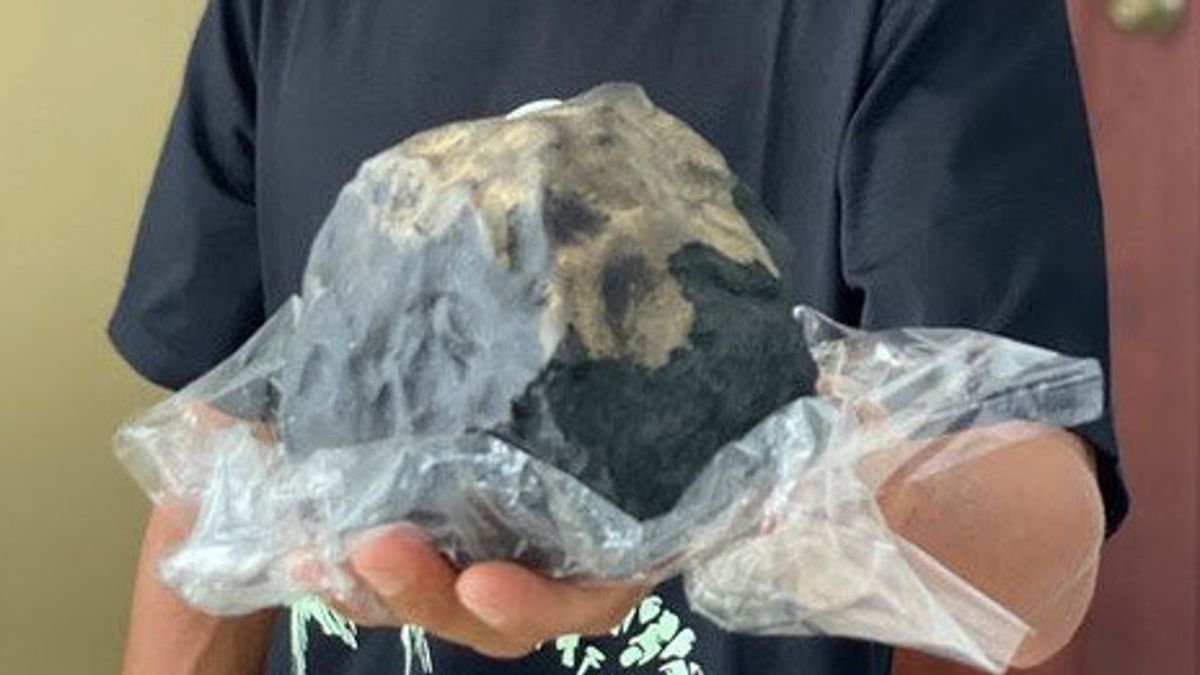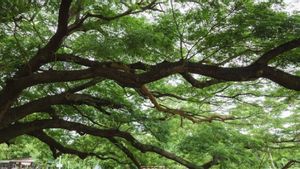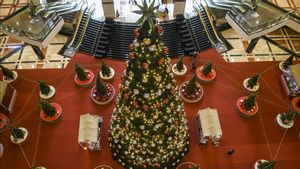JAKARTA - The name Josua Hutagalung (33), a resident of Kolang, Central Tapanuli, North Sumatra, has become a public topic of conversation. The reason is, he had time to sell chunks of meteorite at fantastic prices.
It cannot be explained whether the chunks of meteorite that fell at the house, Josua, came from the Perseid meteor shower some time ago. This is because the space phenomenon is indeed passing and clearly visible in the Indonesian sky.
"We can't say it from the Perseid meteor shower, why? Because we have to do the surgery first, determine the type, then what the content is," said National Aeronautics and Space Science Center (LAPAN) researcher Rhorom Priyatikanto to VOI, Friday , 20 November.
Based on LAPAN's records, last August there was a Perseid meteor shower phenomenon. This phenomenon occurs when the giant comet 109P orbits close to Earth.
The dust and debris of the comet rubs against the Earth's atmosphere and leaves a trail of shooting stars. It is estimated that there are more than 500 meteor fragments that may fall to Earth.
Questioning the high price of the meteor chunks, Rhorom did not want to speculate further. The reason is that there was collector interference in the sale and purchase transaction of the meteor stone found by Josua.
"I heard that there is a role for the collector there. So, if you have collected, there are various factors," he added.
It is known that the outer space rock, aka a meteorite weighing 2.2 kg, fell and hit the roof of Josua Hutagalung's house. He then sold the stone to a meteor expert named Jared Colins, weighing 1,800 grams, which was valued at Rp. 200 million.
However, it was recently reported by foreign media such as The Sun, which said that Josua's meteorite chunks could be priced at 757 Pounds Sterling or the equivalent of Rp.14.1 million (at an exchange rate of Rp.14,000) per gram. This means that Joshua's stone is equivalent to IDR 26 billion.
Media reports say that the meteorite is classified as Carbonaceous Chondrite or CM1 / 2, a rare meteorite variety. Where according to scientists, the meteorite is believed to contain unique amino acids and other ancient elements that may answer the origin of life, about 4.5 billion years ago.
"If we find such a meteor, there is potential for us to study the origin of our solar system, what conditions were in its early formation," said Rhorom.
LAPAN didn't realize itIt is very unfortunate that the meteor stone found by Josua had been sold before being investigated by LAPAN or other Indonesian study centers. Rhorom admitted, if his party did not pay attention to this aspect other than space observations.
"So functionally, LAPAN does have a section that concerns or pays attention to the hazard or potential disasters of falling space objects, both natural and artificial. So we focus on mitigation steps and monitoring them," said Rhorom.
For now LAPAN can only monitor space crossings. However, to conduct research, according to him, there are other institutions that do have tools for researching the types of rocks.
"Now, for the study of what a meteor is, such as content and so on, we do not have or part of LAPAN that focuses on the study. There are no rock experts, no meteor experts who are researchers at LAPAN or focus on handling meteors," he added. .
On the other hand, LAPAN does not have a buying or transaction mechanism for mineral rocks, including meteors if they are found by residents. He only reminded that if there are residents who find foreign objects, it is better to report it to the related party so that there is a follow-up research taken by the authorities.
"As a rule, there is no such thing. If there is a report and it wants to be submitted to the state through Lapan, then go ahead. But there is no mechanism for buying rocks," he continued.
Furthermore, LAPAN realizes that there is potential for further research beyond the space aspect. Rhorom hopes that in the future, his party will provide more facilities for research on meteorites specifically that fall in Indonesia.
List of Most Expensive Meteor Rocks in the WorldEven though it has a pretty fantastic price, it turns out that the meteor rock that Joshua found is not the most expensive in the world. There are some meteors that actually come at an astounding price. Here's the list:
1. Fukang meteorite (Rp28 billion)This meteorite is a very rare space rock. Its components consist of pallasite which is made of iron-nickel in which olivine (green) crystals are contained. Scientists believe only 1 percent of all meteorites that fall on Earth are pallasites.
It is estimated that this meteorite is 4.5 billion years old, meaning that these rocks are almost the same age as our planet or older. According to reports, this meteorite was discovered in 2000 and, its name was taken from the location where the meteorite fell.
2. The Brenham meteorite (IDR 14.78 billion)The Brenham meteorite is shaped like a shield and is a pallasite meteorite found near Haviland, Kiowa County, Kansas, USA. Pallasite is a kind of rocky meteorite which when cut and polished will show yellowish olivine (peridot) crystals.
3. Willamette Meteorite (Rp14, 04 billion)In October 2007, this multi-million euro meteorite fragment was offered for sale in New York, and was donated by the American Museum of Natural History. This meteorite is believed to be one of the largest meteorites found on Earth in 1902, as it weighs more than 16 tons.
4. The Conception Junction Meteorite (Rp. 11.94 billion)Found accidentally by a farmer at Conception Junction Missouri. University of St. Louis in 2006, researchers believe this meteorite was once part of an asteroid orbiting Mars and Jupiter.
They also identified the space rock as pallasite, with olivine crystals in it. They are sprinkled all over the iron-nickel surface.
5. Meteorite Springs (Rp8.43 billion)The 117-pound pallasite meteorite was estimated to be 4.5 billion years old when it was discovered on a farm in Saskatchewan, Canada in 1931. It also contains the mineral olivine in large quantities.
When sliced and polished the beautiful olivine crystals can be clearly seen, something that can make the Pallasite meteorite so desirable to collectors. It was purchased by the Royal Ontario Museum in Toronto for Rp.8.43 billion.
6.Mars Zagami meteorite (IDR 6.3 billion)The Mars Zagami meteorite landed in Nigeria in 1962. It was the largest single meteorite ever found, weighing around 18 kilograms (40 lb). It was found by a farmer near Zagami, Nigeria and buried in a hole about two feet deep.
According to NASA's Ron Baalke, the Zagami meteorite is the most easily available SNC meteorite available to collectors. This refers to the classification of SNC meteorites (Shergottites, Nakhlites, Chassignites), which includes Mars meteorites.
The English, Chinese, Japanese, Arabic, and French versions are automatically generated by the AI. So there may still be inaccuracies in translating, please always see Indonesian as our main language. (system supported by DigitalSiber.id)












